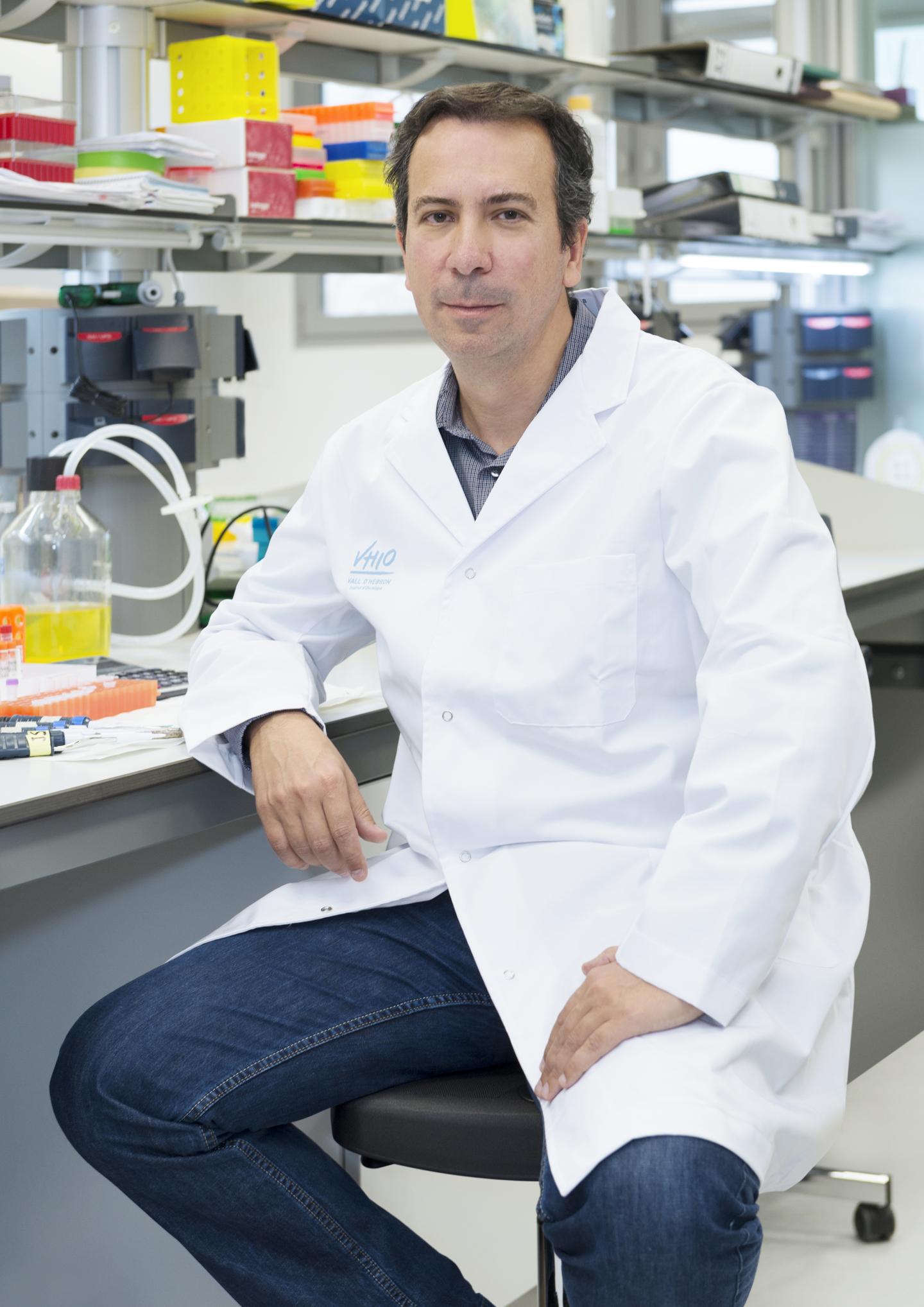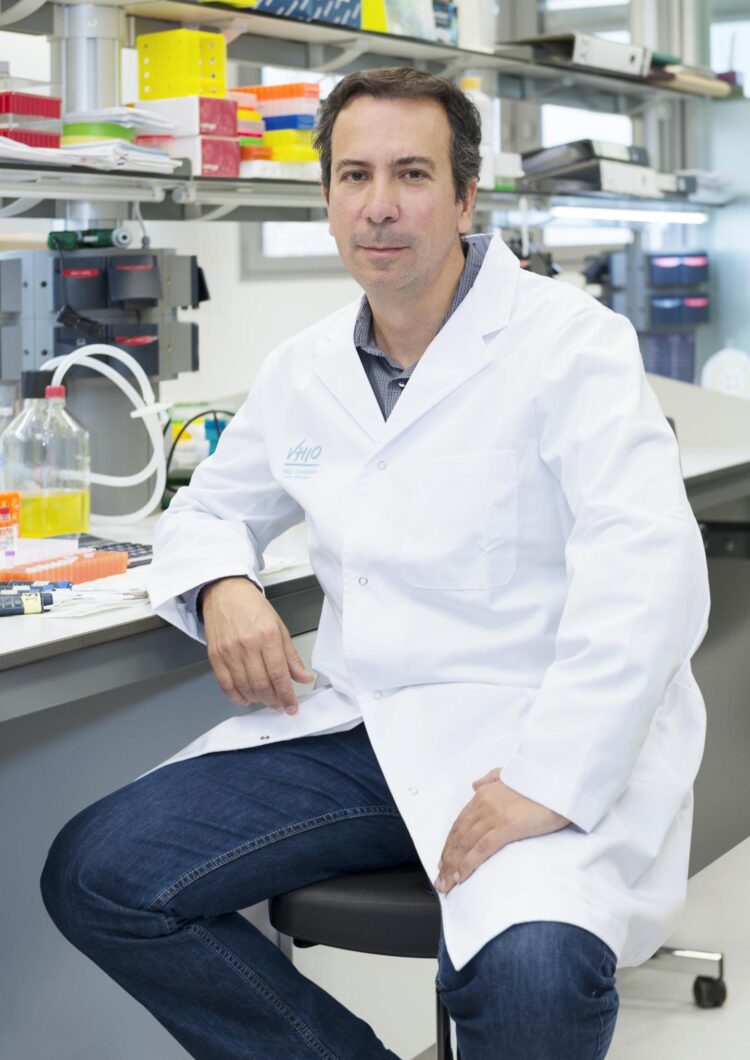Results from a proof-of-concept study show the promise of cerebrospinal fluid as liquid biopsy for the characterization and real time tracking of medulloblastoma

Credit: VHIO
Cerebrospinal fluid as liquid biopsy for the precise characterization and policing of medulloblastoma
- Results from a proof-of-concept study led by Joan Seoane show the promise of
cerebrospinal fluid as liquid biopsy for the more precise characterization and real time tracking of medulloblastoma. - Circulating tumor DNA from cerebrospinal fluid reveals genomic alterations during disease evolution -even prior to surgery- to more precisely guide treatment decision making.
- Cerebrospinal fluid as liquid biopsy against medulloblastoma translates in less invasive sampling, better identification and characterization of disease relapse.
Building on previous research 1 – 3 led by Joan Seoane, Director of Translational Research at the Vall d’Hebron Institute of Oncology (VHIO) and ICREA Research Professor, latest findings from a proof-of-concept study published in Nature Communications, show that the analysis of cerebrospinal fluid (CSF) circulating tumor DNA (ctDNA), allows for the more precise characterization, molecular diagnosis (including subtyping and risk stratification), and real time tracking of medulloblastoma (MB) – the most prevalent malignant brain tumor in childhood.
Carried out in multidisciplinary collaboration across the Vall d’Hebron Barcelona Hospital Campus, results also evidence that this novel and less invasive approach can also provide precious insights into minimal residual disease, tumor evolution, and identify disease at relapse.
While the genomic characterization of medulloblastoma promises a more precise molecular diagnosis, accessing tumor tissue -due to the very nature of its location- is complex and can suppose high-risk surgical procedures and stereotactic biopsies, neither of which can guarantee access to a truly representative part of the tumor. The classification of this tumor type is also particularly challenging due to its ever changing intra-tumor heterogeneity which demands an in-depth and serial analysis of the evolving genomic landscapes in response to treatment or during disease recurrence. Establishing the molecular make-up of medulloblastoma is particularly critical since this tumor type is the most common of all paediatric brain cancers.
“Results from this present study represent a potentially practice-changing approach in more precisely steering the surgical and clinical management of these young patients. By evidencing the promise of cerebrospinal fluid as liquid biopsy for the personalized treatment of this extremely aggressive disease, our findings could ultimately spur the development of more effective and tailored therapeutic strategies. As importantly, they could also reduce excessive treatment to prevent long-term secondary effects,” observes corresponding author Joan Seoane, who also leads VHIO’s Gene Expression and Cancer Group.
“Medulloblastoma is highly a complex, heterogenous tumor type that evolves over time. Currently, acquiring further samples to monitor and track changes in the tumor to more precisely match the most effective therapy in real time represents a major challenge. By liquid biopsy of cerebrospinal fluid, we aim to respond to the critical need of rendering the molecular characterization and monitoring of this disease more precise,” adds Laura Escudero, first author of the study and a Post-Doctoral Fellow of Joan’s group at VHIO.
Hydrocephalus is an abnormal accumulation of cerebrospinal fluid and is very common in paediatric patients whose tumors are growing in the area of the posterior fossa, including medulloblastoma. In these cases, cerebrospinal fluid drainage must be performed prior to surgery to reduce increased intracranial pressure (ICP). Since the fluid is routinely collected for cytologic evaluation, this facilitates easy access to samples for research in the laboratory.
This latest research -supported through funding received from the Spanish Association against Cancer (AECC) and the Fero Foundation- demonstrates that the evaluation of cerebrospinal fluid can not only identify genomic alterations during tumor progression even before surgery, but also detect disease recurrence and track cancer progression to better inform treatment decision making in real time. Data derived from the liquid biopsy is therefore fundamental in disease prognosis as well as gauging tumor aggressiveness. This information is crucial for both the surgeon and the oncologist when balancing the risks and benefits of each intervention and therapeutic strategy.
The study investigators also show that CSF ctDNA facilitates the subgrouping and risk stratification of patients suffering from medulloblastoma, which provides valuable insights for the diagnosis and prognosis of disease towards more effectively matching therapies to the unique specificities of each individual patient. Specifically, certain genetic mutations are critical in treatment selection, such as mutations in the PTCH1 gene which encodes a protein called patched-1. In this case, inhibitors of the Hedgehog signaling pathway could be a more effective treatment option.
“Our research represents an important forward step towards better characterizing medulloblastoma, providing an earlier and more accurate molecular diagnosis, more closely monitoring our patients, and providing crucial data on minimal residual disease tumor evolution and disease at relapse. Larger cohort studies are now warranted to bring cerebrospinal fluid as liquid biopsy closer to the clinic and deliver on the promise of precision medicine for the treatment of this disease,” concludes Joan Seoane.
###
Reflective of VHIO’s purely translational and multidisciplinary model, this study counted on the expertise of co-authors including Soledad Gallego and Anna Llort at the Paediatric Oncology Department, Vall d’Hebron University Hospital (HUVH), Juan Sahuquillo, Maria Antònia Poca and Francisco Martínez-Ricarte, HUVH’s Neurosurgery Department, and Santiago Ramón y Cajal who leads the Translational Molecular Pathology Group at the Vall d’Hebron Institute of Research (VHIR), Vall d’Hebron Barcelona Hospital Campus.
For more information please contact
Amanda Wren
Head of the Director’s Office and Global Communications
Vall d´Hebron Institute of Oncology (VHIO)
Tel. +34 695207886
Email: [email protected].
References:
1) Seoane J, De Mattos-Arruda L, Le Rhun E, Bardelli A, Weller M. Cerebrospinal fluid cell-free tumour DNA as a liquid biopsy for primary brain tumours and central nervous system metastases. Ann Oncol. 2019 Feb 1;30(2):211-218.
2) Martínez-Ricarte F, Mayor R, Martínez-Sáez E, Rubio-Pérez C, Pineda E, Cordero E, Cicuéndez M, Poca MA, López-Bigas N, Ramon Y Cajal S, Vieito M, Carles J, Tabernero J, Vivancos A, Gallego S, Graus F, Sahuquillo J, Seoane J. Molecular Diagnosis of Diffuse Gliomas through Sequencing of Cell-Free Circulating Tumor DNA from Cerebrospinal Fluid. Clin Cancer Res. 2018 Jun 15;24(12):2812-2819.
3) De Mattos-Arruda L, Mayor R, Ng CKY, Weigelt B, Martínez-Ricarte F, Torrejon D, Oliveira M, Arias A, Raventos C, Tang J, Guerini-Rocco E, Martínez-Sáez E, Lois S, Marín O, de la Cruz X, Piscuoglio S, Towers R, Vivancos A, Peg V, Ramon y Cajal S, Carles J, Rodon J, González-Cao M, Tabernero J, Felip E, Sahuquillo J, Berger MF, Cortes J, Reis-Filho JS, Seoane J. Cerebrospinal fluid-derived circulating tumour DNA better represents the genomic alterations of brain tumours than plasma. Nat Commun. 2015 Nov 10;6:8839.
Media Contact
Amanda Wren
[email protected]
Related Journal Article
http://dx.





